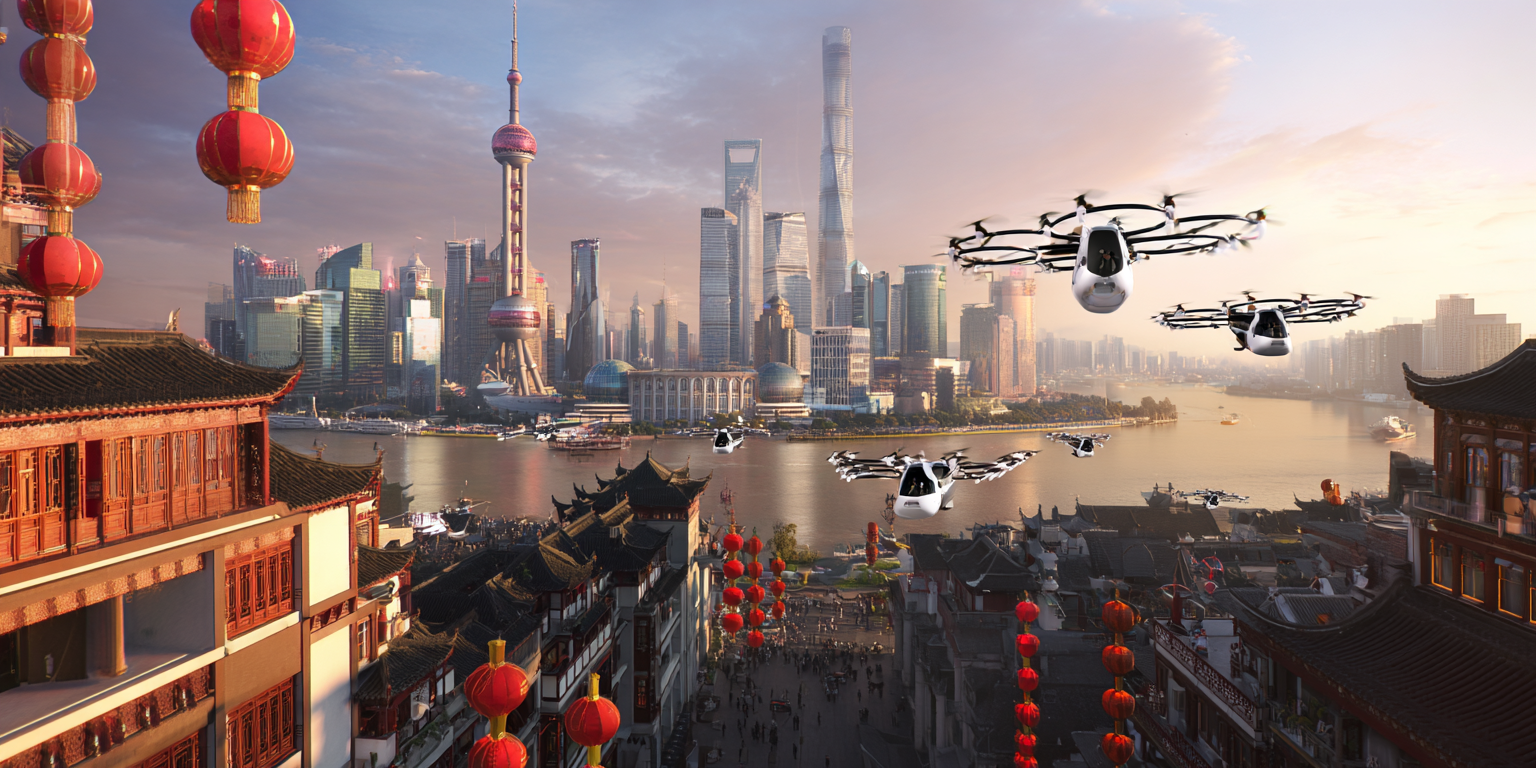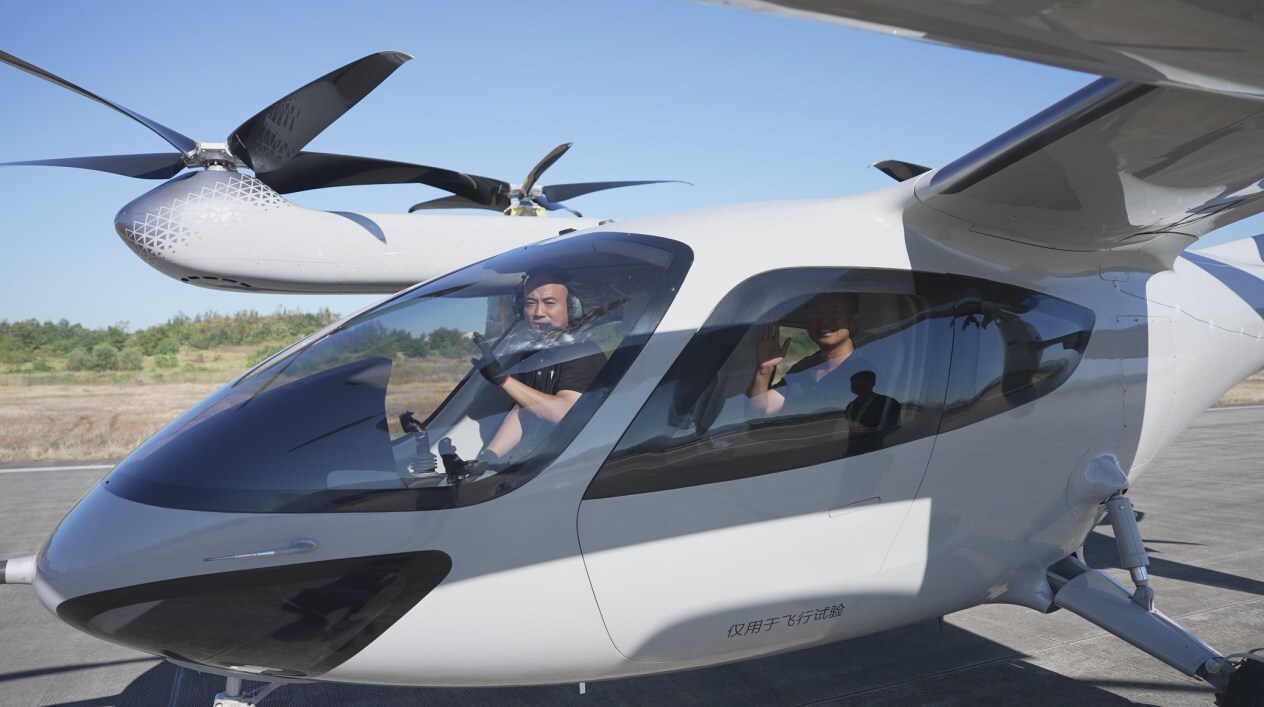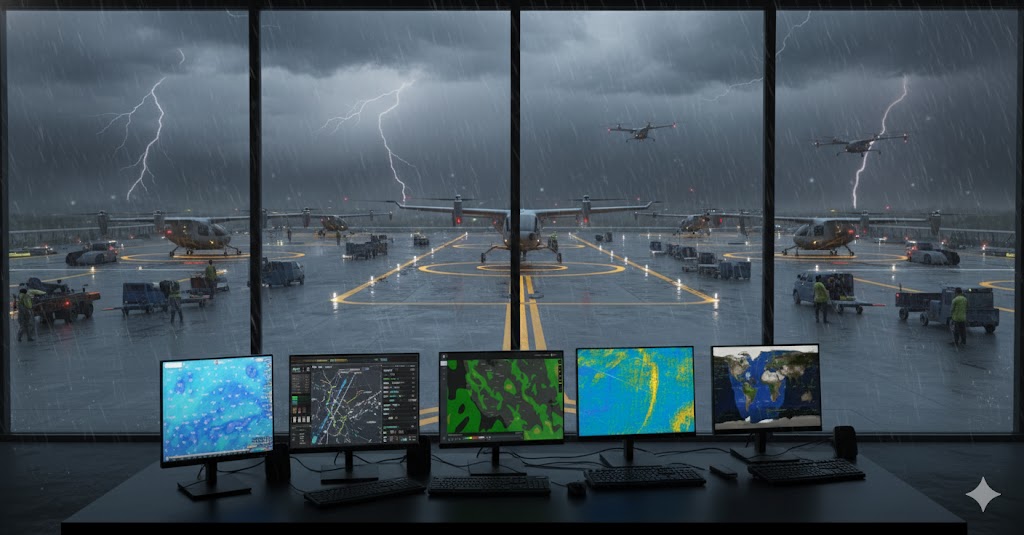The Horizon Cavorite X7 is a hybrid-electric VTOL (Vertical Take-Off and Landing) aircraft designed for advanced air mobility (AAM). It is a concept aircraft aimed at combining the efficiency of electric power with the range and speed of conventional flight, thanks to its innovative design and hybrid power system. The Cavorite X7 can carry one pilot and up to six passengers, boasting a maximum cruise speed of 450 km/h (280 mph) and a range of 805 km (500 miles).
The aircraft utilizes a patented fan-in-wing system for VTOL capabilities, transitioning to forward flight with a pusher propeller, allowing it to operate similarly to a conventional airplane for most of its mission. This unique design is made possible by its hybrid-electric power source, which includes batteries and an onboard generator for self-charging before and after flights.
The hybrid-electric propulsion package of the Cavorite X7 burns jet fuel during forward flight, with enough battery power onboard to enable vertical take-offs. The aircraft’s design allows for sustainable aviation or kerosene jet fuel, which is significantly more energy-dense than current battery technologies. This approach to design provides the Cavorite X7 with the flexibility to be converted to a fully electric propulsion system in the future, should battery technology advance sufficiently to support short-haul operations.
Horizon Aircraft, headquartered in Canada, was founded in 2013 by CEO Brandon Robinson and COO Jason O’Neill. The company specializes in designing and constructing long-range, hybrid-electric aircraft capable of vertical take-off and landing (VTOL), focusing on safety, utility, and operational versatility. These aircraft are developed for long-distance advanced air mobility (AAM).
The concept for their inaugural hybrid-electric aircraft emerged in 2008, when a request for a significantly altered amphibious seaplane led Brian Robinson, Brandon’s father, to propose the creation of a new seaplane altogether. This led to the Horizon X3 hybrid-electric seaplane design, which was equipped with a backup battery system to ensure a safe landing in case of fuel depletion or engine failure. This design featured a decouplable combustion engine, allowing batteries to power an electric motor for the propeller when necessary.
Although the Horizon X3 project was eventually discontinued, it paved the way for creating the Cavorite X5, a hybrid-electric VTOL passenger aircraft. The name “Cavorite” is inspired by the fictional metal in H.G. Wells’ 1901 novel, “The First Men in the Moon,” which negated gravity to enable spacecraft flight.
The innovative Cavorite platform was chosen for the AFWERX High-Speed VTOL (HSVTOL) Challenge, a competitive initiative in collaboration with the United States Air Force (USAF) and US Special Operations Command (USSOCOM) to develop pioneering HSVTOL concepts.
The Cavorite X7, a concept design for a long-range hybrid-electric VTOL, can accommodate one pilot, six passengers, and their luggage. It features a canopy that slides forward for entry and exit, gull-wing passenger doors, and a unique fan-in-wing system for VTOL capabilities, transitioning to a pusher propeller for conventional flight.

This aircraft boasts a maximum cruise speed of 450 km/h (280 mph) and a range of 805 km (500 miles), with 16 fans and electric motors within tandem wings for VTOL operations. The wings open for VTOL and close for forward flight, with a single pusher propeller at the rear for propulsion. It utilizes a hybrid-electric power system with batteries for extended flights and is constructed from carbon fiber composite for strength and lightness.
The aircraft features a modified V tail and retractable landing gear and can perform take-offs and landings on various runway lengths or in VTOL mode. In case of engine failure or fuel exhaustion, an onboard battery pack powers the electrical systems to ensure a safe landing, with conventional landing as an option if the battery lacks power for a vertical descent.
Safety features: Distributed Electric Propulsion (DEP) provides passengers and cargo safety through redundancy. DEP means having multiple propellers (or ducted fans) and motors on the aircraft so that if one or more propellers (ducted fans) or motors fail, the other working propellers (or ducted fans) and motors can safely land the aircraft. There are also redundancies of critical components in the sub-systems of the aircraft.
Should the engine exhaust its fuel supply or encounter a mechanical malfunction, a backup battery pack is available to sustain the operation of the aircraft’s electrical systems, ensuring a safe landing. Additionally, the aircraft can execute a traditional landing should the battery pack lack sufficient power for a vertical descent.
Future developments
Wind tunnel testing is currently taking place in 2023 on a half-scale Cavorite X5 prototype aircraft. Plans are to test the full-scale Cavorite X7 technology demonstrator aircraft in 2024 and to obtain type certification for their production aircraft in 2026 or 2027. The company foresees the Cavorite X7 being used for medevac, fire-fighting, and air cargo missions. Then, after many of the initial mission flights are successful, the air missions will gradually be expanded for regional passenger advanced air mobility (AAM).
Specifications:
- Aircraft type: Hybrid-electric passenger eVTOL concept design aircraft
- Piloting: 1 pilot
- Capacity: 6 passengers
- Maximum cruise speed: 450 km/h (280 mph)
- Range: 805 km (500 m)
- Empty weight (with fuel): 1,815 kg (4,001 lb)
- Maximum payload weight: 680 kg (1,500 lb)
- Maximum take-off weight: 2,495 kg (5,500 lb)
- Propellers: 16 fans (patented fan in wing system), one pusher propeller
- Electric motors: 17 electric motors
- Power source: Hybrid-electric power source
- Fuselage: Carbon fiber composite
- Windows: The cockpit has a canopy over the cockpit, which slides forward for exit and entry. The passenger cabin has gull-wing doors.
- Wings: Tandem wings
- Tail: Modified V tail
- Landing gear: Retractable wheeled landing gear




